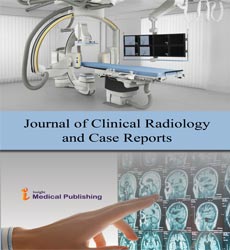Abstract
Pancreatic Neoplasms: A Diagnostic Dilemma
Context: Imaging of pancreas is a challenging situation. However rapid evolution of CT has enhanced the diagnostic accuracy many folds.
Aim: To determine the accuracy of Multi-Detector Computed Tomography (MDCT) in characterization of pancreatic masses and to correlate imaging findings with histopathological diagnosis.
Material and methods: This prospective study was carried out on patients in Nizam's Institute of Medical Sciences, Hyderabad from December 2016 to April 2018. A total of histopathologically proven 35 consecutive cases with primary pancreatic masses were analyzed.
Results: There were 17 males and 18 females with age range from 18 to 83 years. Maximum were in 4th to 6th decade. The final histopathology examination (HPE) diagnosis included adenocarcinoma in 24 (68%), solid pseudopapillary epithelial neoplasm (SPEN)-3 (8.5%),Neuroendocrine tumors (NET)-3 (8.5%), serous cyst adenoma-2 (5.7%), mucinous cyst adenoma-1 (2.8%), Intraductal Papillary Mucinous Neoplasm (IPMN)-1 (2.8%) and Gastrointestinal stromal tumor (GIST)-1(2.8%). There were 5 cases where the radiological diagnosis did not correlate with pathological diagnosis. Mimics of ductal adenocarcinoma are NET and cystic neoplasm in our series. The overall diagnostic accuracy of CT was 85%.
Conclusion: Pancreatic ductal adenocarcinoma is the most common malignancy followed by NET and cystic neoplasms. Though extremely rare, GIST can also occur. Overall, the CT has diagnostic accuracy of 85%. Since feasibility for resection and prognosis are different for each type of the tumors, definite early diagnosis is essential.
Author(s): Sana Quadri, Sujata Patnaik, Megha Uppin and Phani Chakravarthy
Abstract | Full-Text | PDF
Share This Article
Google Scholar citation report
Citations : 1
Journal of Clinical Radiology and Case Reports received 1 citations as per Google Scholar report
Abstracted/Indexed in
- Google Scholar
- Secret Search Engine Labs
Open Access Journals
- Aquaculture & Veterinary Science
- Chemistry & Chemical Sciences
- Clinical Sciences
- Engineering
- General Science
- Genetics & Molecular Biology
- Health Care & Nursing
- Immunology & Microbiology
- Materials Science
- Mathematics & Physics
- Medical Sciences
- Neurology & Psychiatry
- Oncology & Cancer Science
- Pharmaceutical Sciences


